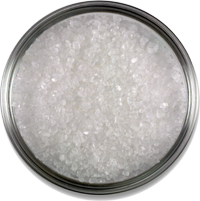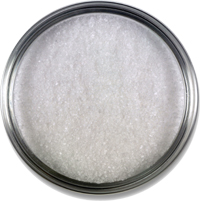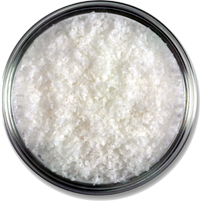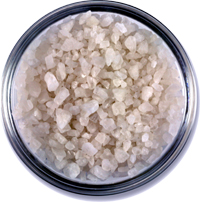Resources - Uses
food manufacture | de-icing | water-softening | general industry
the role of salt
For thousands of years, salt has been used to preserve food and improve taste. It has a wide range of uses:
- Seasoning
Salt is used as a seasoning to enhance the taste of food or make otherwise bland foods palatable, such as bread and pasta. - Preservative
For centuries, salt has been used to preserve foods such as meat, fish and dairy products. Even with the development of refrigeration, salt preserving remains an important aid to food hygiene. - Binding Agent
Salt acts as a binder as it helps extract the myofibrillar proteins in processed and formed meats, binding the meat together and reducing cooking losses. - Colour controller
Used with sugar and nitrate, salt gives processed meats, such as ham, bacon and hot dogs, a more attractive colour. It also enhances the golden colour in bread crust by reducing sugar destruction in the dough and increasing caramelisation. - Texture aid
Salt strengthens gluten in bread dough, providing uniform grain, texture and strength, allowing the dough to expand without tearing. It also improves the tenderness of cured meats, and develops rind hardness and even consistency in cheese. - Fermentation control
In baked products, salt controls fermentation by retarding the growth of bacteria, yeast and moulds. This is important in making a consistent product and reducing the opportunity for harmful bacteria.
Based upon 'Sodium Halides, Sodium Chloride' Bruce M Bertram, Salt Institute.
The amount of salt we consume depends on our individual eating habits, but typically about 20 per cent of our salt intake is from foods that naturally contain salt, such as eggs, meat and fish.
At the table, a typical person adds an estimated 15 per cent of his or her intake to food. The remainder of the salt in our diet is added during cooking or comes from processed foods.
Many foods contribute to total salt intake without being perceived as being salty. For example, white bread and cornflakes both contain salt but, unlike potato crisps or nuts, the salt is contained within the food and not on the surface, where it is more easily detected.
Keeping us safe
WINTER MAINTENANCE IS:
- Vital for safety
- A fast-response activity
- A service provider/road user partnership
- Failures can lead to high-profile coverage
- Inconsistencies lead to danger
When you turn over in your warm bed on a wintry night, spare a thought for the members of your local winter maintenance teams - out there in freezing conditions, spreading salt on the roads to make them safe for when you leave home. It is a vital task.
The de-icing of roads in wintry conditions is a matter of concern for every family in the country, as well as every business. Good winter maintenance is rarely noticed: only when things go wrong does it become a public issue. When sudden bouts of cold weather bring traffic chaos, icy roads receive high-profile coverage in the media and local authorities are criticised, often unfairly, for not affording greater protection.
Safe winter travel involves a partnership between the service provider and the road user. For that partnership to work, it is important for the partners to understand what they can expect from each other. Many councils take pains to give residents information on winter maintenance in their area. However, policy differs between areas and this is a potential danger to the travelling public.
Salt is the ultimate 'sustainable' resource. It is recycled naturally and always ends up back in the sea - ready for recovery and use by a future generation.
hard water
If you have a tide-mark around the bath, you probably live in a hard water area. In the UK, about 60 per cent of homes have moderate to hard water. These lie mainly in the east and eouth of England. The peaty waters of Scotland, Wales and north-west England tend to be soft.
Rain is distilled water, free from impurities. As it passes through the air, it is contaminated by carbon dioxide and other impurities. When it reaches the ground, it picks up other elements, depending on the local geology.
In some regions of the country, it passes through chalk or limestone before arriving in reservoirs, rivers and wells. The calcium and magnesium carbonates picked up by the water are not normally harmful, but cause lime-scale to built up on kettles, boilers and water heaters, making them inefficient and more costly to run.
Calcium and magnesium react with soap to produce 'scum', reducing the effectiveness of washing machines and dishwashers. Scale builds up on toilet bowls and shower heads. Shampoo and bubble baths don't lather properly and some people with skin problems find hard water makes them worse.
softening water
Water companies treat water to ensure it is safe for human use, but it is usually impractical and uneconomic to remove hardness. Many businesses use water directly from underground wells or bore holes. Both industrial and domestic water can be softened economically, using an ion-exchange process.
The cause of hardness is the presence of calcium and magnesium ions. If those ions are removed, the hardness disappears. In ion-exchange, troublesome ions are exchanged for trouble-free ones. In its original state, an ion exchange polymer or resin carries sodium ions on its surface. This has a strong affinity for larger, more highly charged calcium and magnesium ions. When hard water passes over the resin, the sodium ions are displaced. As sodium salts are more soluble than calcium and magnesium, the symptoms of hardness disappear. Although chemical and other methods can bring some control over hardness, only ion-exchange can completely remove the calcium and magnesium ions which cause it.
When the sodium ions are exhausted, the hardness will reoccur. However, the resin is designed to be reusable. By passing a concentrated salt solution (brine) over the resin, the calcium and magnesium are displaced by sodium and the resin reactivated. This process is called regeneration.
Regeneration is usually automatic, either when a certain volume of water has been used or at a set frequency, when the water softener is out-of-use. In industry, several resin vessels are used and one is periodically taken 'off-line', to avoid interruption to production.
In domestic situations, regeneration usually takes place early morning, or a twin tank system is used. Modern domestic machines are designed to be highly salt-efficient. These require special grades of salt to optimise performance. The salt is very pure and larger than normal table salt, to produce brine quickly. Some machines use salt tablets, produced from compressed salt. Softened water is so effective in dishwasher operation that a softener is often built into the machine. The salt used should be a dishwasher grade, rather than table salt.
Sir Humphrey Davy (1778-1829) first separated salt into its constituent parts of sodium and chlorine in 1807. At the time, no one could think of anything useful to do with them, but subsequently their properties became the bedrock for many manufacturing industries.
Today, salt keeps our industries alive. The properties of chlorine and sodium and the principal compounds from them, make it one of the most important of the basic raw materials which industry uses. Chlorine compounds of commercial importance include hydrochloric acid, and sodium hypochlorite. Important sodium compounds include sodium carbonate (soda), sodium sulphate, baking soda, sodium phosphate, and sodium hydroxide.
Salt is widely used as a preservative for meats and is employed in some refrigeration processes, in dyeing, and in the manufacture of soap and glass. Because they are transparent to infrared radiation, salt crystals are used for making the prisms and lenses of instruments used in the study of infrared radiation. Chlorine is used in the manufacture of PVC, which is contained in a vast number of products including blood bags and the tiny catheters used to help keep premature babies alive.



